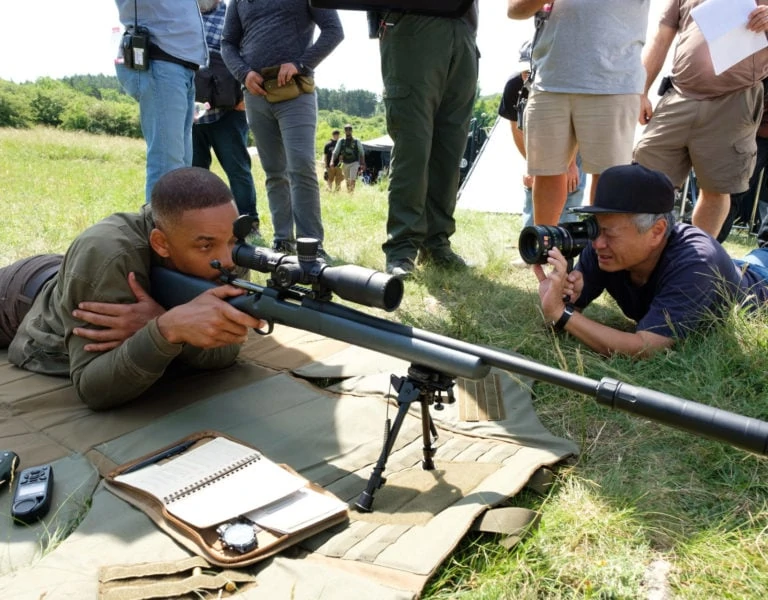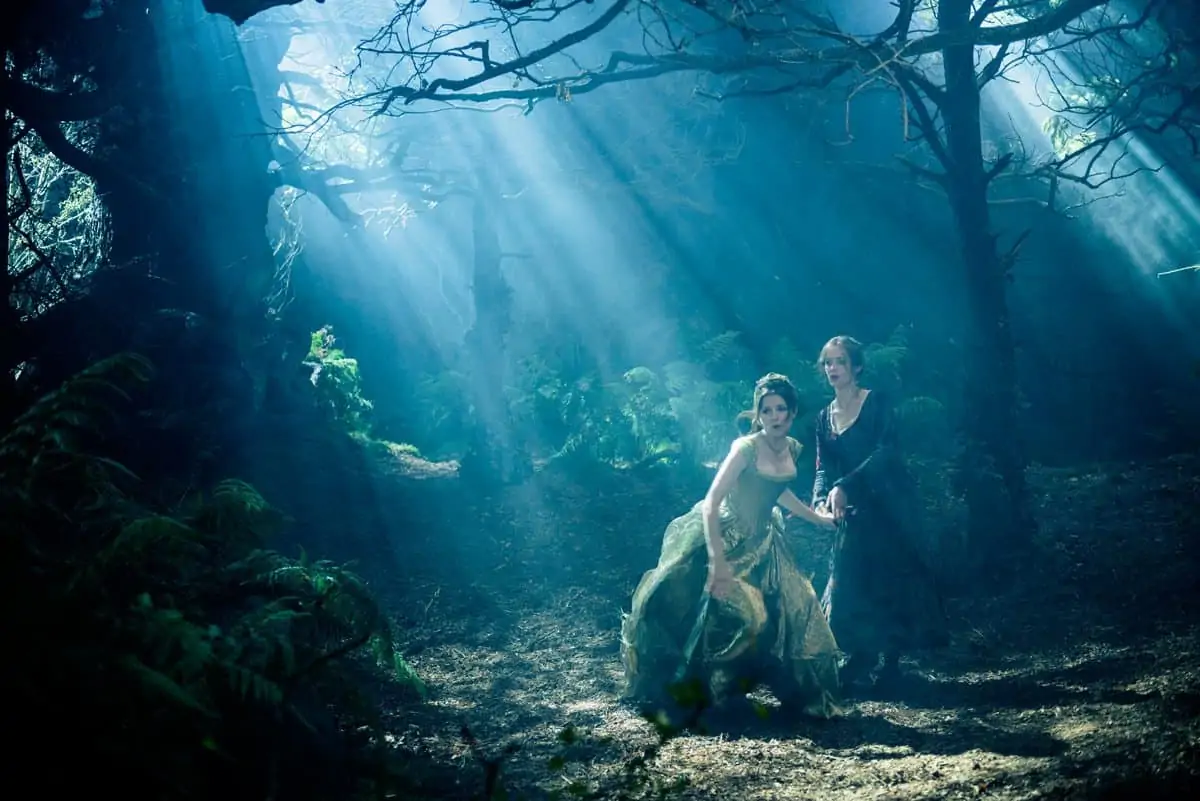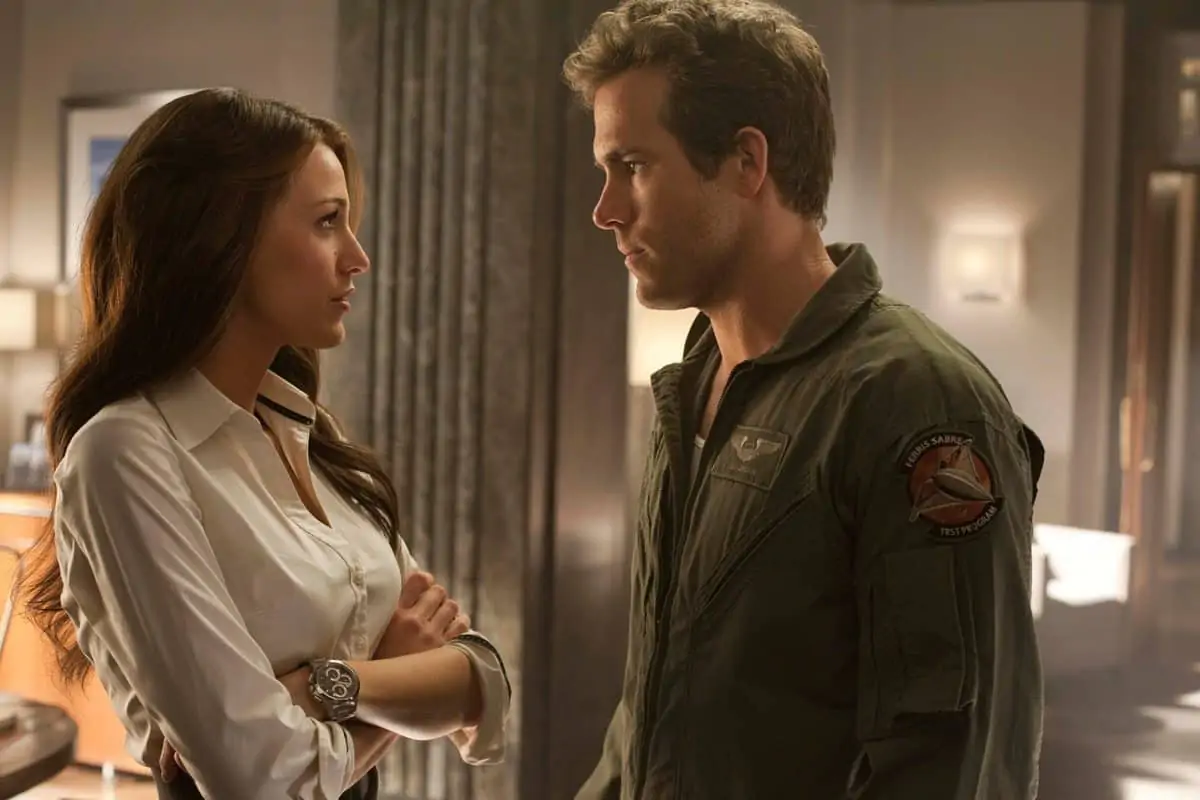Keeping heads above water
The Little Mermaid is a complicated, VFX-heavy production in which the main challenge was to blend mostly CGI-created underwater sequences with the largely live-action shoot for above-water scenes.
The latest in Walt Disney Pictures’ live-action retelling of its 2D animated classics is among its most complex productions yet. The Little Mermaid is the tale of two halves: one largely live-action shoot above the water and the other largely CGI creation underwater. Finding a way to shoot, light and blend those story worlds preoccupied director Rob Marshall (Chicago, Pirates of the Caribbean: On Stranger Tides) and cinematographer Dion Beebe ACS ASC (Chicago, Gemini Man) in extensive prep for the movie.
“This was a complicated story to tell,” says Beebe. “We spent a good year trying to figure out the methodology. There are a lot of ways to tackle a movie like this and a lot of technology to support these ideas but as with any project, for me it’s about the story and the director’s preferences and strengths. What do they tend to lean into and what sort of technology will they best respond to?
“Since Rob’s background is theatre and dance and The Little Mermaid is a musical, timing is everything for him, especially in the musical numbers. We needed a methodology that would give him control over all live action elements to best serve his vision for the project.”
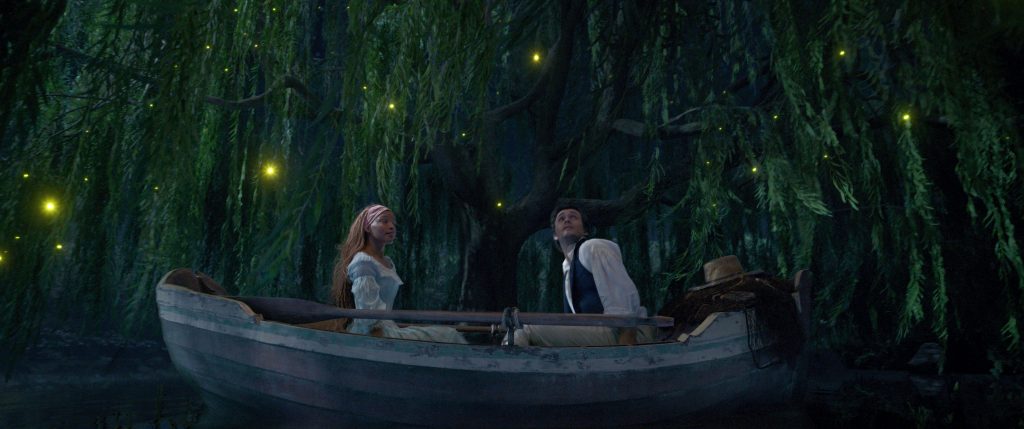
They were days out from starting principal photography in March 2020 when COVID forced production to shut down. They didn’t recommence rolling at Pinewood Studios until that December, but the extra months were used to dive deeper into previz and boards.
“Because the complexity of what we were doing was so tech-heavy, having that additional time working remotely meant we were very prepared when principal photography began.”
Aiming to protect the live action as much possible, Beebe and Marshall agreed to film actors including Halle Bailey, Javier Bardem and Melissa McCarthy in rigs against blue screen rather than use performance capture.
“Our actors could interact with each other, and we could control timing, choreograph their movement and how the camera moved around them. We were shooting as much of that as we could live knowing we were only extracting torso, faces and arms and that the lower half of the body would be tails.”
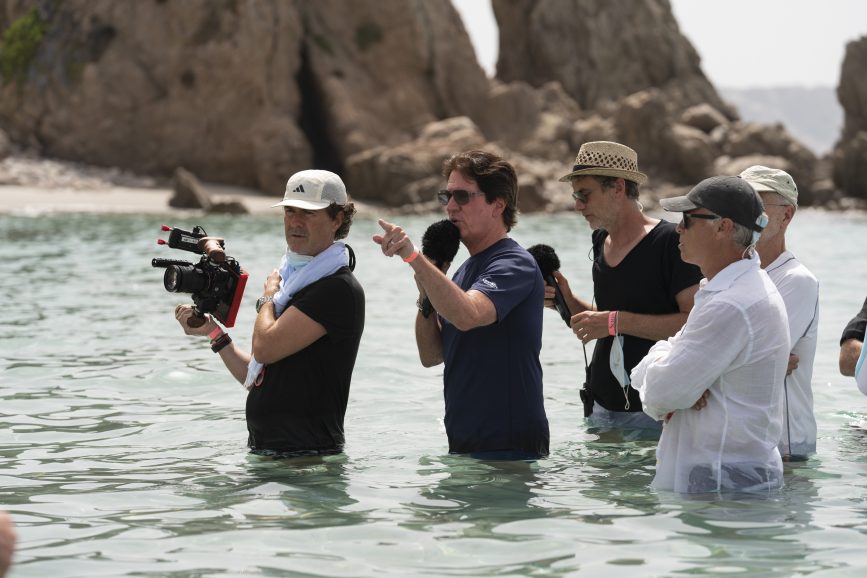
Three-pronged approach
To Beebe the film was effectively divided into three types of production: the above world “a fairly straightforward shoot with fantasy period elements”; below the sea “where we embraced a lot of VFX”; and a third mode in which CG characters Flounder, Sebastian and Scuttle were folded into the live-action plates.
“Because this incorporated puppeteering on set it was like another type of film. We’d film Ariel with the puppeteers and pre-recorded voice dialogue in those sequences so we could control reactions, eyelines, and timing.”
Most work was devoted to blending the story transitions between ocean and Earth. Shooting on the large canvas of ARRI Alexa 65, Beebe felt that Hawk Anamorphics were right for above sea shots. Below decks he switched to spherical Leica Thalia Primes.
“I felt it important that the VFX team had the ability to control depth under the water. If I’m shooting anamorphic wide open and my depth of field drops off at the ear of a character in the foreground then adding another character into that frame, particularly one that has dialogue, would be harder in anamorphic.”
Preproduction involved research and tests, for the look of the underwater sequences in particular. Beebe studied BBC documentary Blue Planet for references to how underwater photography should look in terms of visibility, depth of field and colour.

“We spent a lot of time developing a template for how water would look at different depths, building in ideas of what particles are in the water, water density and the fall off from depth of field we wanted.”
In this endeavour he recruited DI colourist Michael Hatzer, whose own collaboration with Marshall and Beebe began on Into The Woods (2014) and continued with Mary Poppins Returns (2018). His work with Beebe predates this, having first met when Hatzer colour timed the science fiction Equilibrium (2002). Now at Picture Shop in Hollywood, Hatzer was invited by Beebe to join The Little Mermaid early in production for screen tests for the main cast including Halle Bailey.
“We shot a lot of hair, make-up and wardrobe tests with Rob and Dion at Pinewood,” Hatzer explains. “Throughout pre-production the driving aim was to figure out how we WERE going to combine the above-water material with the underwater shots. We concluded that we needed two different workflows for two different colour spaces.”
They had to take account of the colour spectrum which changes when filming underwater and by water depth.
“When Ariel is at her shelf area underwater with Scuttle and Flounder we know that is close to the surface and it is quite clear and bright,” Beebe says. “In King Triton’s domain Atlantica it’s a little cooler in the shadows and visibility starts to lesson a bit. When we dive deep into Ursula’s world the red spectrum is largely eliminated and we’re into deep blues and purples. So, Michael and I developed ideas of how we’d tackle each realm in the underwater world.”
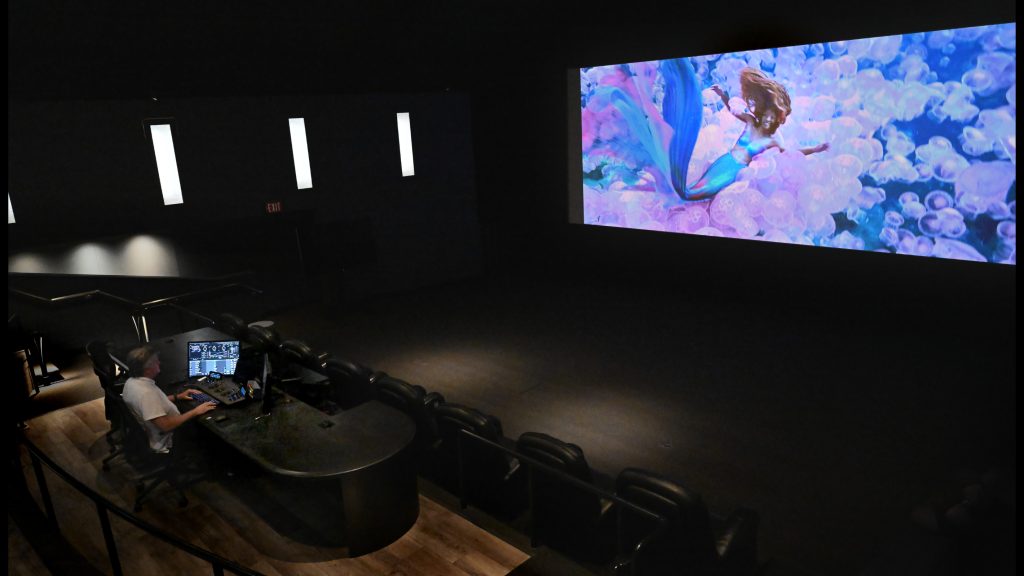
Creative collaborations
The red hue of hair chosen for Ariel is deliberately darker than in the original animation. In conjunction with VFX, hairstylist Camille Friend commissioned three custom shades of golden-orange, 30-inch hair extensions to encase Bailey’s own locks.
The DP adds, “I will always shoot tests in prep and then bring Michael into that process so I can take the test through the DI and really start to look at ideas for final colour.”
This also included tests for above water scenes such as in the castle, seat of Prince Eric’s kingdom, where there’s a lot of candlelight and firelight sources.
Consequently, they devised an ACES colour space for the underwater sequences – a pipeline the VFX vendors preferred – while above-water material was handled in LogC3, the wide colour gamut recorded by ARRI cameras.
“We had to integrate and blend the colour space of the two worlds before the grade,” says Hatzer, who built an ACES workflow that did just that in Baselight at Picture Shop. “Once we figured out how to do that we gave Dion and the VFX companies different LUTs to work with. I would give Dion the option to use the LUT so that his DIT could apply it on set and that way we’d arrive at dailies which were pretty close to what they wanted.”
Beebe picks up the story, “For the underwater world we developed looks in terms of how cool we wanted to be in the shadows, the density of water. As I move into different scenes I could apply the most appropriate LUT to the sequence. These looks would then be applied to dailies. Knowing we had a long process of VFX and post to go through before it was finalised the tests were available for the VFX team to reference for colour and movement.”

Lighting the underwater sequences was another challenge, not least because the filmmakers wanted to bake practical light into scenes featuring performance.
“We knew we wanted movement in the light,” Beebe says. “Underwater is never static, the characters are never static, there’s always movement of people. It’s like floating in space and the camera is moving on multiple axes all the time. Whether day or night the underwater is still lit from above.”
Water trays are often used to illuminate subjects above ground and near water. These are on the floor, sometimes with broken mirrors in, onto which you skip a light which reflects back a ripple effect.
In this case though, the characters were going to be below the surface and at different depths for much of the time. With gaffer Dave Smith, Beebe devised a tray system that could work from above.
Trays with a clear Perspex bottom were rigged 30ft up in the ceiling of the stage. Moving theatrical lights were directed through the water to subjects below “as if lit through a giant liquid filter,” Beebe describes.
The SFX team then designed a way for gaffer and DP to stir and control the water’s motion remotely from the stage floor. Multiple trays were hung to cover multiple characters. “You could disturb the water and shine a light through it to emulate the movement of caustic light underwater. We could change the effect as we moved between the different realms.”

Sardinian sequence
One particular live-action sequence was shot day for night on location in Sardinia. In the story this is Prince Eric returns, at night, to the beach where Ariel had rescued him. Filming this involved testing many weeks ahead of photography to discern the best time of day.
“The beach we chose had a rock outcrop that we really wanted as a signature feature so the audience could instantly locate themselves in the story,” says Beebe. “In the scene Eric is lost in thought, looking out at the ocean. The idea of trying to light a huge night sequence on a beach where we had to feel the ocean’s presence wasn’t realistic, even to shoot at dusk. So, I proposed to Rob we do it day for night.
“I’ve done quite a lot of day for night, for example on Gemini Man with Ang Lee and I know you have to be considerate of any practical sources and the sun direction. Because of all the VFX enhancements you can add to it, day for night is a very useful approach when you’re in these huge environments that you can’t possibly light. It allows you to shoot with a lot of depth, see a lot of landscape and still create the idea of a night exterior.”
The tricky part was incorporating flaming torches which would illuminate the scene at night. They used extremely bright balls throwing nine kilowatts of light that would flicker and create a little bit of interaction onto Jonah Hauer-King playing Eric.
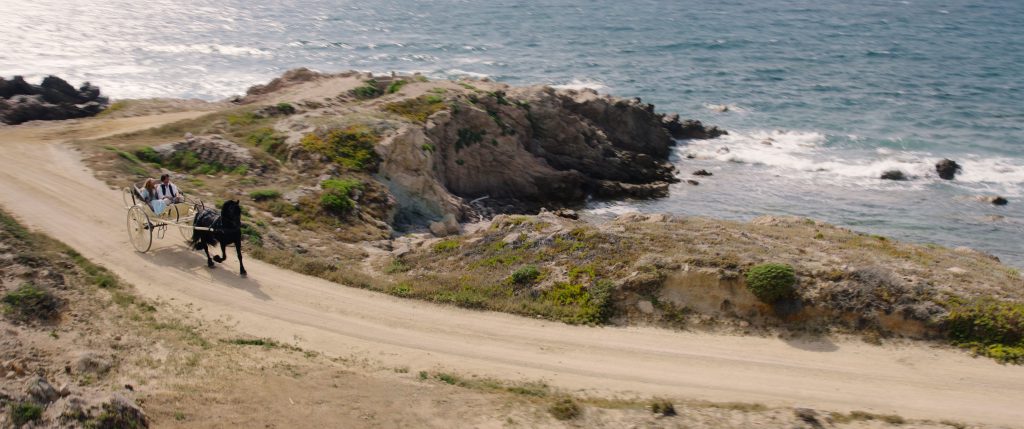
In the grade, as part of the test, Hatzer created an overcast atmosphere to block out the sun, brought down the highlights and vignetted areas to give the filmmakers a more accurate idea of what final picture would look like. The VFX teams used this as a guide to create the final look.
“Dion has such a keen eye and shoots beautifully,” Hatzer testifies. “I’ve worked with him for so long I have a good sense of what he wants the image to look like, where he likes his exposure to sit, where he likes shadows to be in relation to highlights. We will do very little tweaking here and there but, essentially, I am trying to add contrast or a certain saturation to colours or a little light into eyes or to bring out the beauty of skin tones. I am not recreating magical looks or anything that isn’t in camera. Rob and Dion know exactly what they want.”
While the DI was set up in Hollywood, Hatzer along with conform editor Everette Weber and assistant colourist Kevin Schneider moved to Picture Shop’s facility in Tribeca, New York for two and a half months of finishing. Marshall, editor Wyatt Smith and the sound mix was based out of New York making it far easier for the director to oversee the work. Beebe flew there too to supervise the grade.
Aside from the 2D 4K theatrical ‘hero’ grade, Picture Shop produced versions for Dolby Vision, the stereo 3D conversion and an HDR pass for home deliverables.
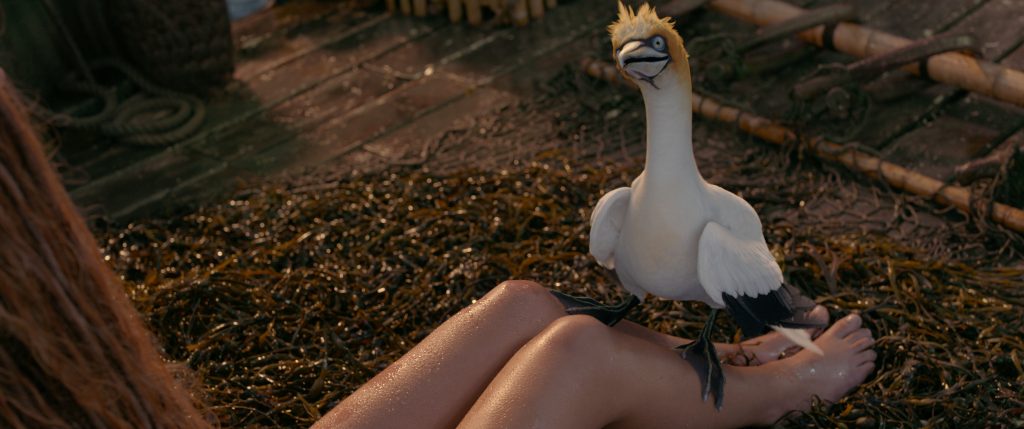
Aerial for Ariel
Jeremy Braben Assoc. BSC and his team at Helicopter Film Services (HFS) were called upon for the production’s aerial photography requirements. Their team included film pilot Giles Dumper, along with Francesco Comensoli, flying the AS350 Squirrel helicopter with aerial cinematographer Braben, who was operating the Shotover F1 gimbal rigged with the ARRI Alexa Mini LF camera and Fujinon 28-100 Premista lens. A helicopter was also used for capturing photogrammetry.
“We were asked to film a lot of visual effects plates to capture background plates for the build of Ariel’s castle, water plates, landscapes, cliffs – which were all filmed in Sicily using both drone and helicopter,” says the HFS team. “We filmed plates to be able to show Ariel’s ship running aground. We also filmed the ship which was mounted in a hydraulic gimbal to show it wrestling with the water’s movements, for which we used only the drone (no helicopter).”

